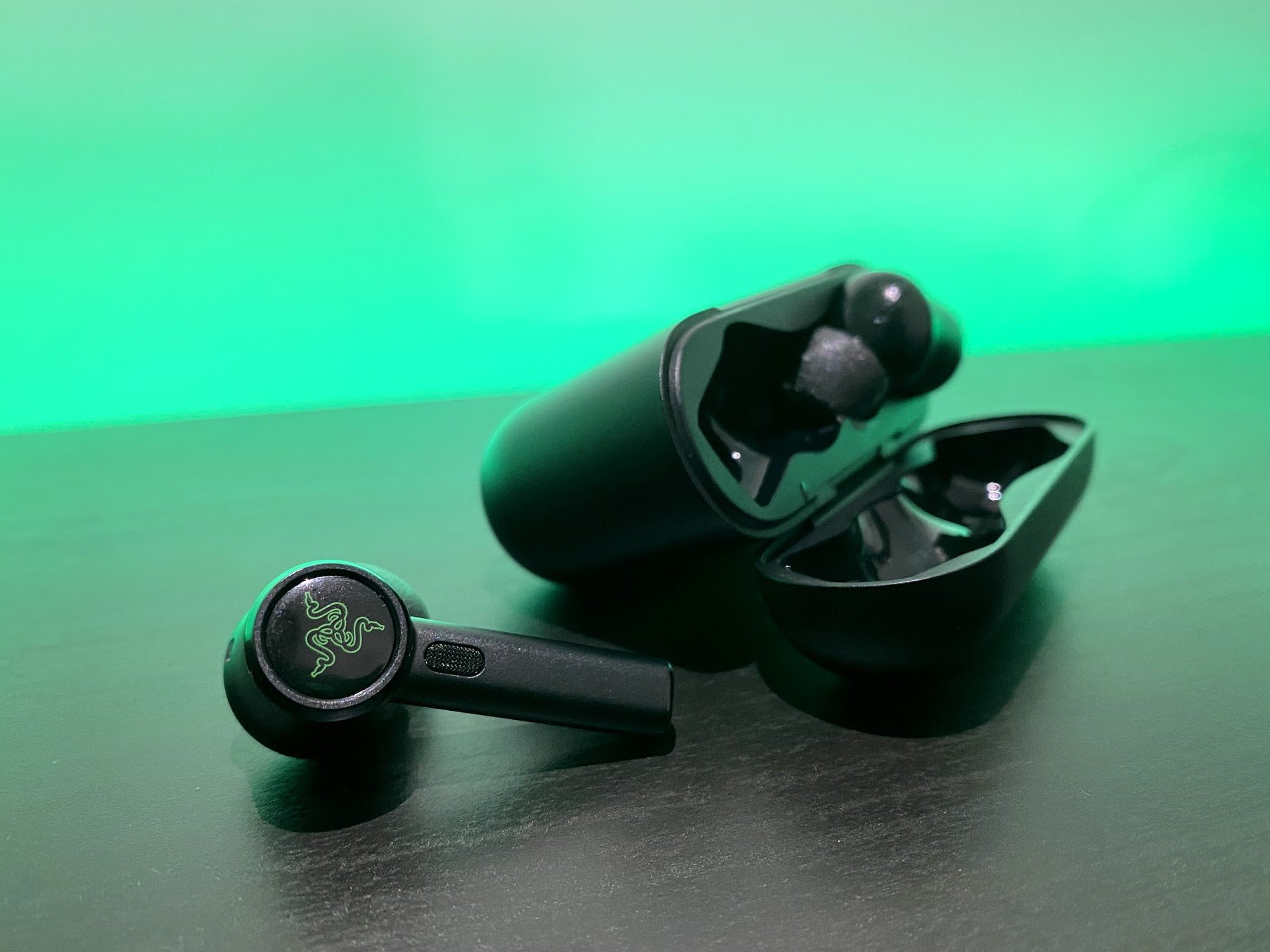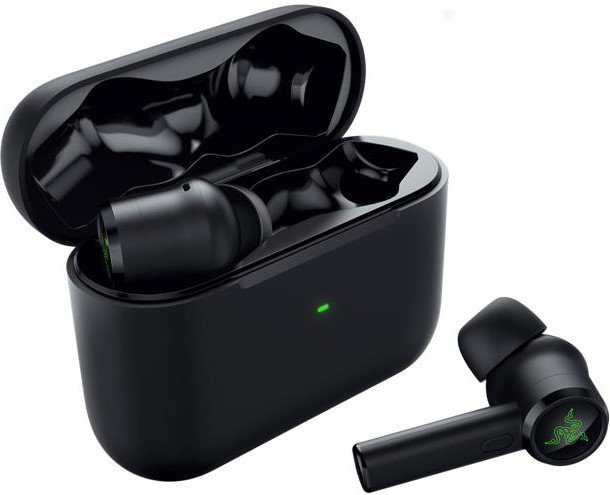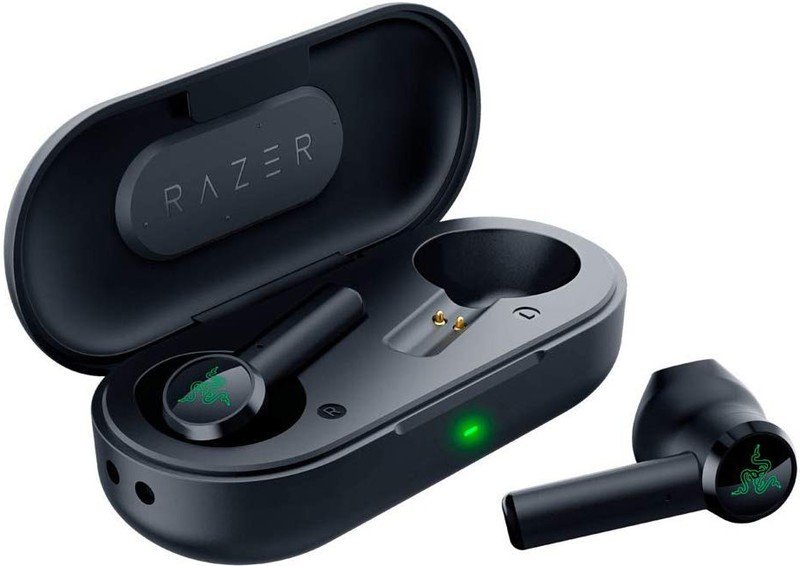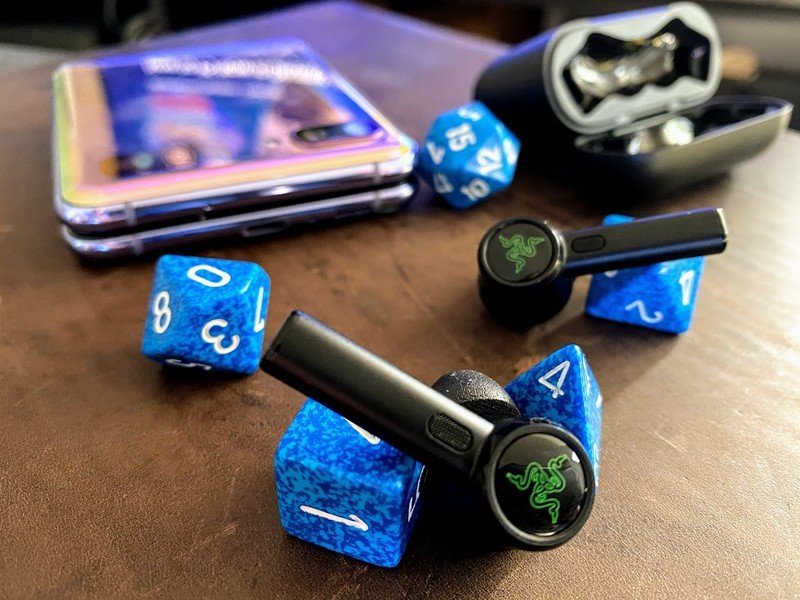Razer Hammerhead True Wireless Pro vs. Hammerhead True Wireless: Which should you buy?

Razer Hammerhead True Wireless Pro

Razer's gaming chops show themselves with these true wireless earbuds, not only because of their low latency performance, but also because they happen to sound great for more than just playing games.
Razer Hammerhead True Wireless Pro
Gamer's edge
Razer Hammerhead True Wireless

Razer's first kick at the true wireless can comes with an obvious gaming element, but they weren't made as one-trick ponies, and that's what stands out most when playing anything through them.
Razer Hammerhead True Wireless
Ready to play
If you know Razer, you know that the company's pedigree has always been in gaming peripherals, with headphones being part of that lineup. Earbuds were also a thing for the company, though true wireless earbuds were a different animal altogether. The main reason why was because of latency and connection stability. Those are still major considerations for both of these models, but the differences between them are about the various elements related to design, features, and performance.
Razer Hammerhead True Wireless Pro vs. Hammerhead True Wireless More than meets the eye

Razer's intention with the Hammerhead line was to jump aboard the true wireless train in a way that would be credible to both the company's gaming users, and to those who weren't necessarily calling themselves gamers. For that reason, the company would probably push back against characterizing either of these as "gaming earbuds." They certainly could be, and I'd argue that's their real cachet, but they work just fine for music and video, too.
Despite their respective names almost being exactly the same, Razer took different approaches to their design. Both have the AirPods-style stems, except the Hammerhead True Wireless Pro use a more common driver that sticks out to attach an ear tip. The original Hammerhead True Wireless don't have that, going with an angular driver that has only one silicone cover. That makes a difference in a number of facets, which matters because, on paper, they seem so similar.
| Header Cell - Column 0 | Razer Hammerhead True Wireless Pro | Razer Hammerhead True Wireless |
|---|---|---|
| Durability | IPX4 | IPX4 |
| Bud battery life | 4 hours | 4 hours |
| Charging case battery life | 12 hours | 16 hours |
| Connectivity | Bluetooth 5.1 | Bluetooth 5.0 |
| Wireless charging case | No | No |
| Charging connector | USB-C | USB-C |
| Digital assistant support | Google Assistant, Siri | Google Assistant, Siri |
| Speaker size | 10mm drivers | 13mm drivers |
| Supported audio codecs | SBC, AAC | SBC, AAC |
| Active noise cancelation (ANC) | Yes | No |
| Transparency/ambient sound mode | Yes | Yes |
Save for a few things, you would think there's only an iterative improvement here that doesn't jive with the price discrepancy. Battery life is virtually the same, with only the case giving you an extra charge for the Pro. Neither one has any advantage in water or sweat resistance, nor in relative size, as they're roughly the same.
Objectively, four hours of bud battery life is mediocre by today's standards. Even budget true wireless earbuds routinely go past that. But in a world where the regular AirPods barely crack four hours themselves, Razer's limitations here aren't without some precedent. It's just surprising the company couldn't do better with the Hammerhead Pro. It does seem like a lot of extra money to ask for when you can't muster longer life per charge, so that premium has to come from other elements.
Be an expert in 5 minutes
Get the latest news from Android Central, your trusted companion in the world of Android
Razer Hammerhead True Wireless Pro vs. Hammerhead True Wireless Not just a game

There are a couple of reasons why the Hammerhead Pro stand out from their brethren on the audio front. The first is the general fit, where Razer includes six pairs of silicone ear tips, plus another solitary pair of Comply Foam tips. Somewhere in that range, you're likely to find a pair that fit your ears well enough to seal out background noise and keep the copious amount of bass from leaking out.
The second reason is the THX audio certification, which adds an extra bit of sonic pleasure to whatever you listen or watch. Razer has an ongoing relationship with THX that has seen the same certification apply to the company's other headphones, but unfortunately not the regular Hammerhead True Wireless. That distinction matters, though it's a shame Razer didn't also give the Hammerhead Pro an update to spatial audio playback, like it has to its over-ear headphones. That's not to say that it will never happen, just that it hasn't happened yet.
The Hammerhead Pro do have active noise cancelation (ANC), which is great when you want to block out some ambient noise. Plus, there's good support from Razer's app to get even more out of them. The equalizer is good for tweaking the sound to your personal preferences, while the Gaming Mode kicks in the 60ms low latency when you want to play any game on your phone or tablet.
There are a couple reasons why the Hammerhead Pro stand out from their brethren on the audio front.
The app also applies to the regular Hammerhead earbuds, so the EQ and Gaming Mode features aren't exclusive to either pair here. The general soundstage is similar in both cases because bass is prevalent, though you literally have less wiggle room on comfort and fit with the regular Hammerheads. The Pros have an easier go of it because of the tips available. Even if you wanted to buy third-party foam tips to seal things even further, you have that option. With the regular Hammerheads, you don't.
That being said, they both offer great sound. There's a resonance to them you can appreciate, regardless of how you feel about video games. Avid movie and show buffs will benefit from the same features anyway, so there's a lot to like about how they play. They're pretty good for phone calls, and that makes them equally relevant for chatting during gameplay when you have that option.
Not surprisingly, you only get one color option for both, and they do look pretty similar, with the green trim of the Razer logo standing out from the all-black scheme.
Razer Hammerhead True Wireless Pro vs. Hammerhead True Wireless Which pair should you choose?
The choice between these two really comes down to two things: features and price. The Hammerhead Pro were given a lot to work with, and they (mostly) earn their keep at the cost of entry. They sound great, and there's the potential they'll get even better if Razer actually goes that route. The fit and additional features add to what is a pretty solid package of features. You just have to be cool with getting some of the most mediocre battery life of any pair of earbuds at that price.
Ironically, the gaming side isn't that different between them. The THX certification is a big one, though it's not a feature specific to playing games. If you are looking for a pair of gaming earbuds, you could go either way, but even there, the other differences between them make a difference.
Alternatively, if you are looking for gaming-friendly earbuds, you could go wired and try the 1More Triple Driver on for size. Or you can try a pair of aptX Low Latency headphones as a way to play games. There also some amazing options among the best true wireless earbuds as well.

Ted Kritsonis loves taking photos when the opportunity arises, be it on a camera or smartphone. Beyond sports and world history, you can find him tinkering with gadgets or enjoying a cigar. Often times, that will be with a pair of headphones or earbuds playing tunes. When he's not testing something, he's working on the next episode of his podcast, Tednologic.
